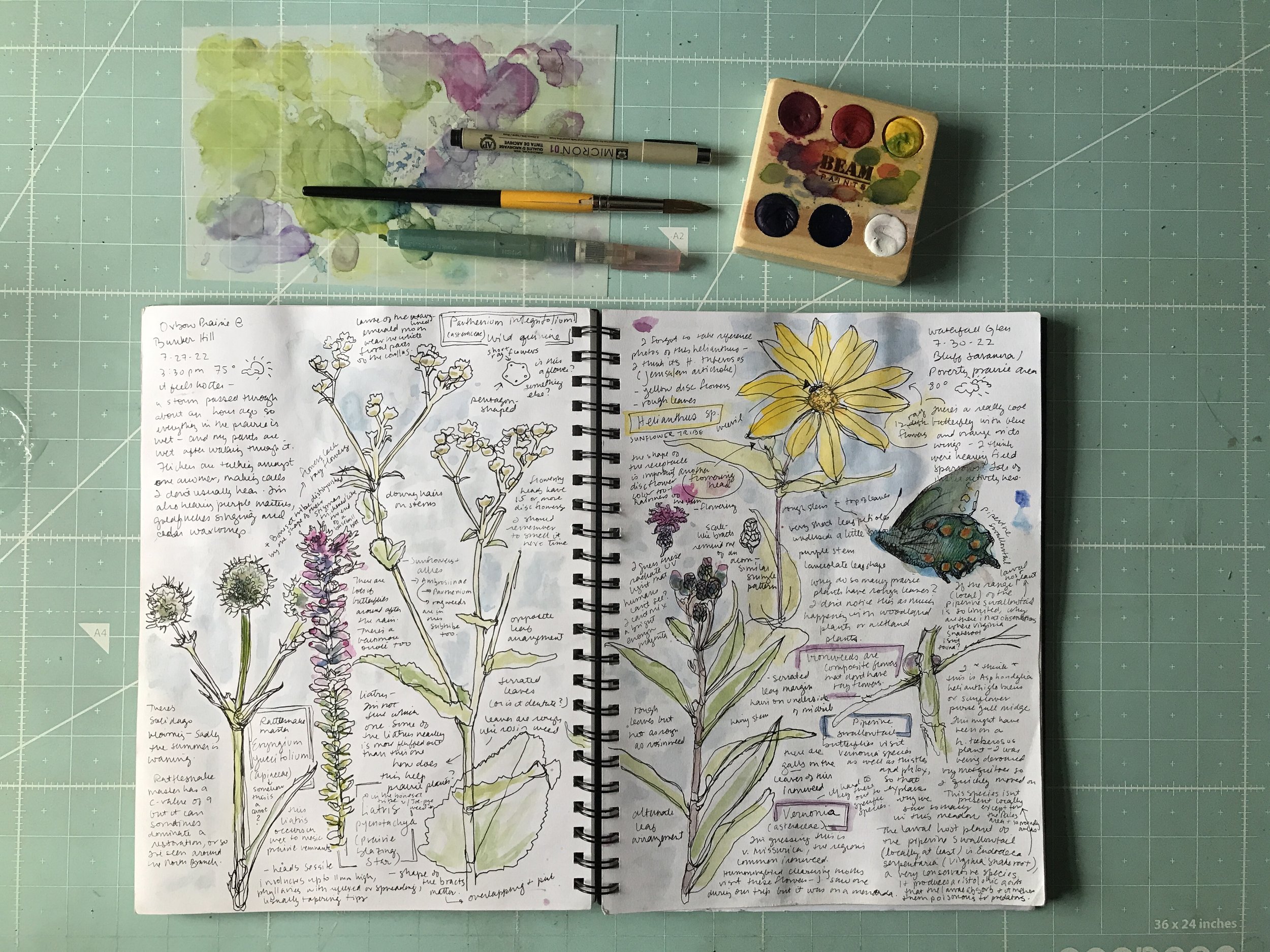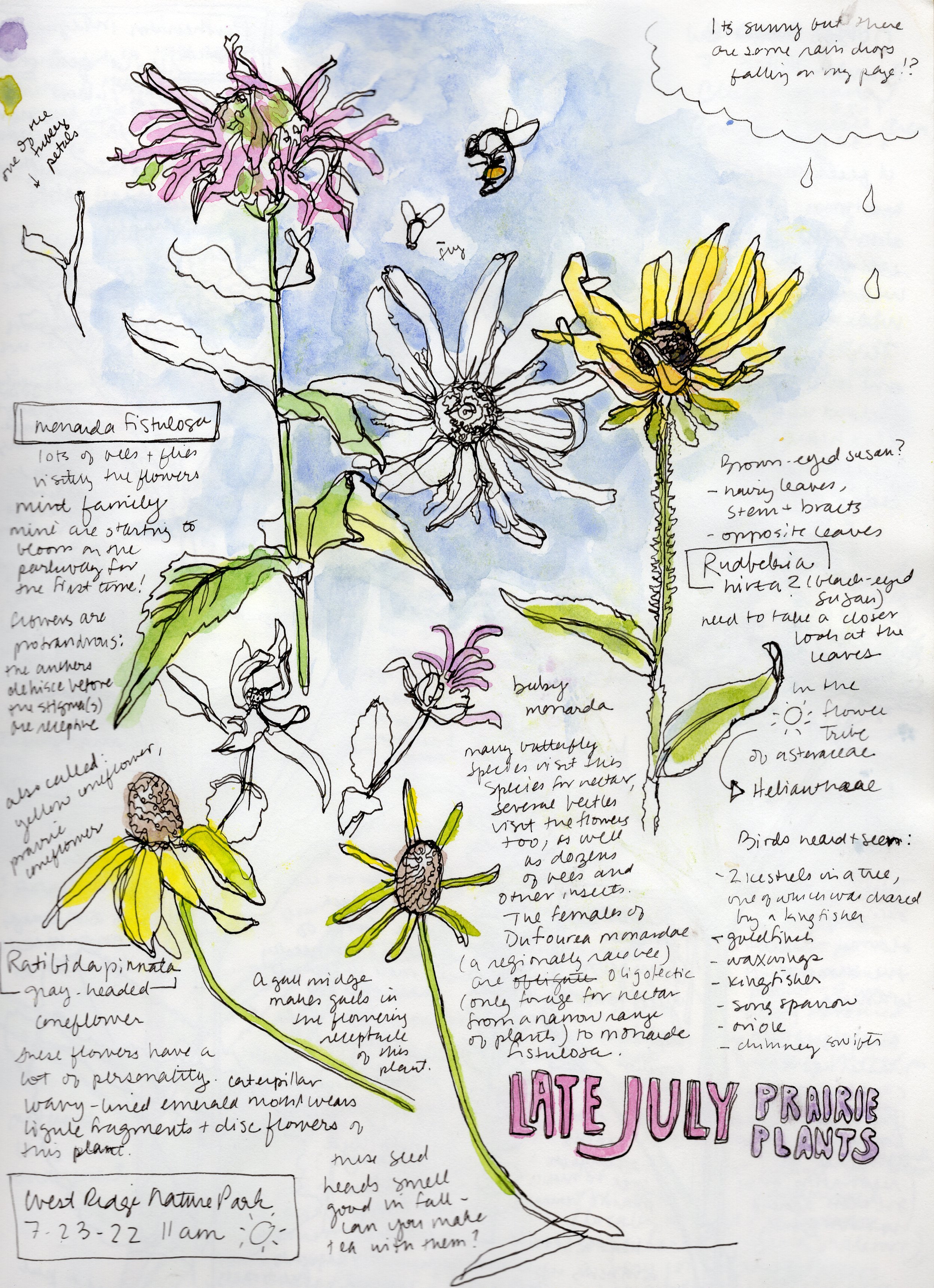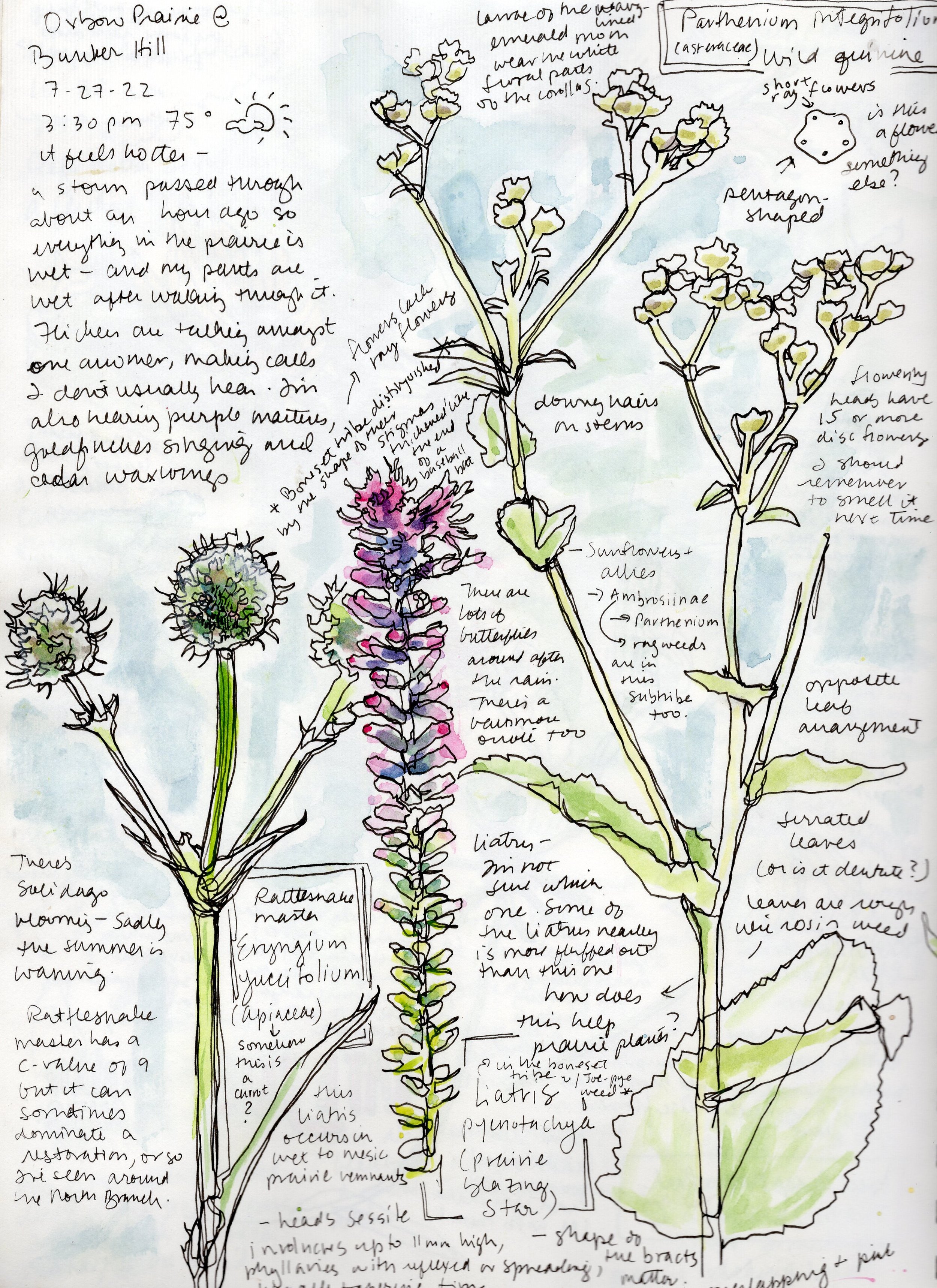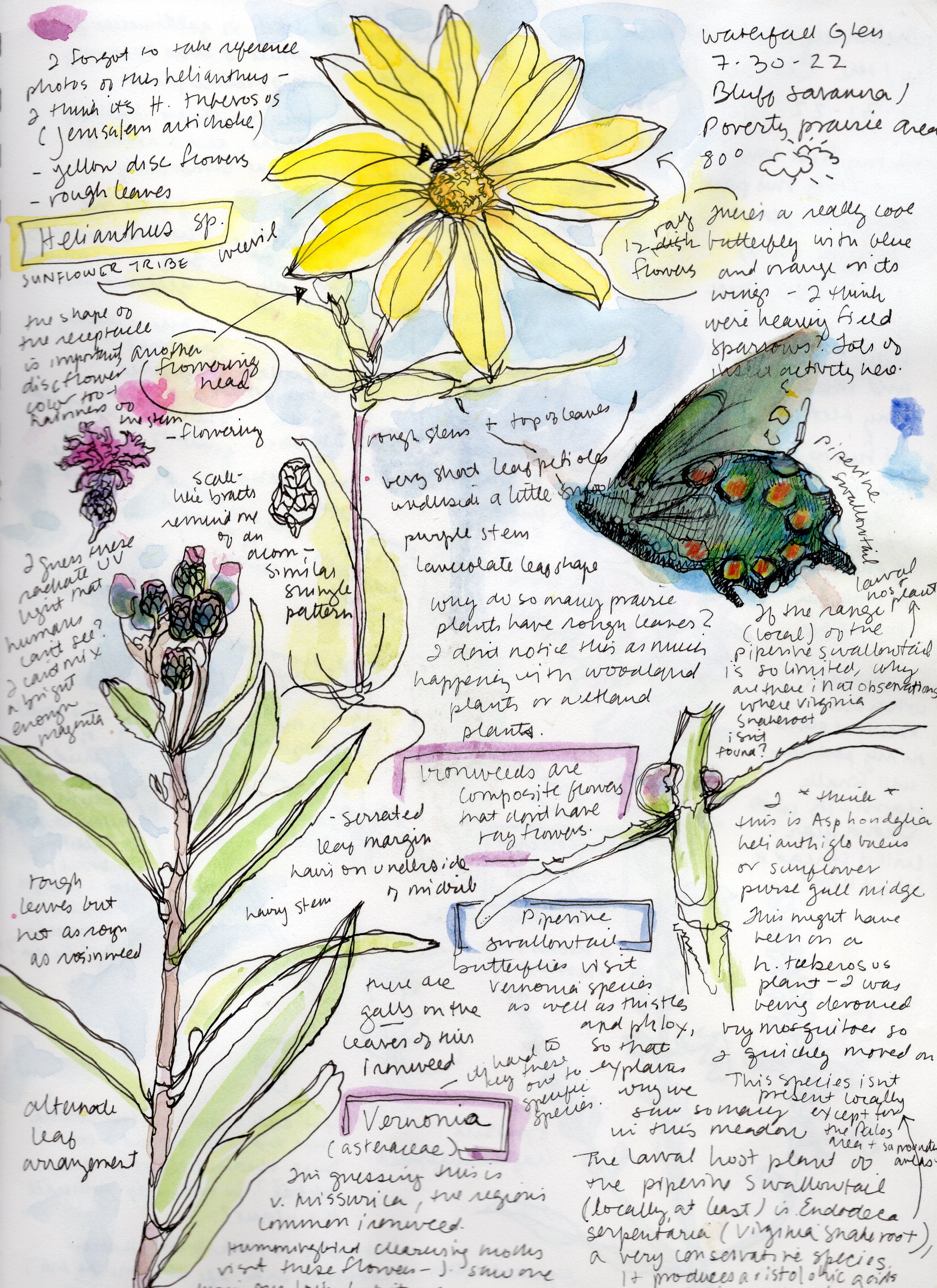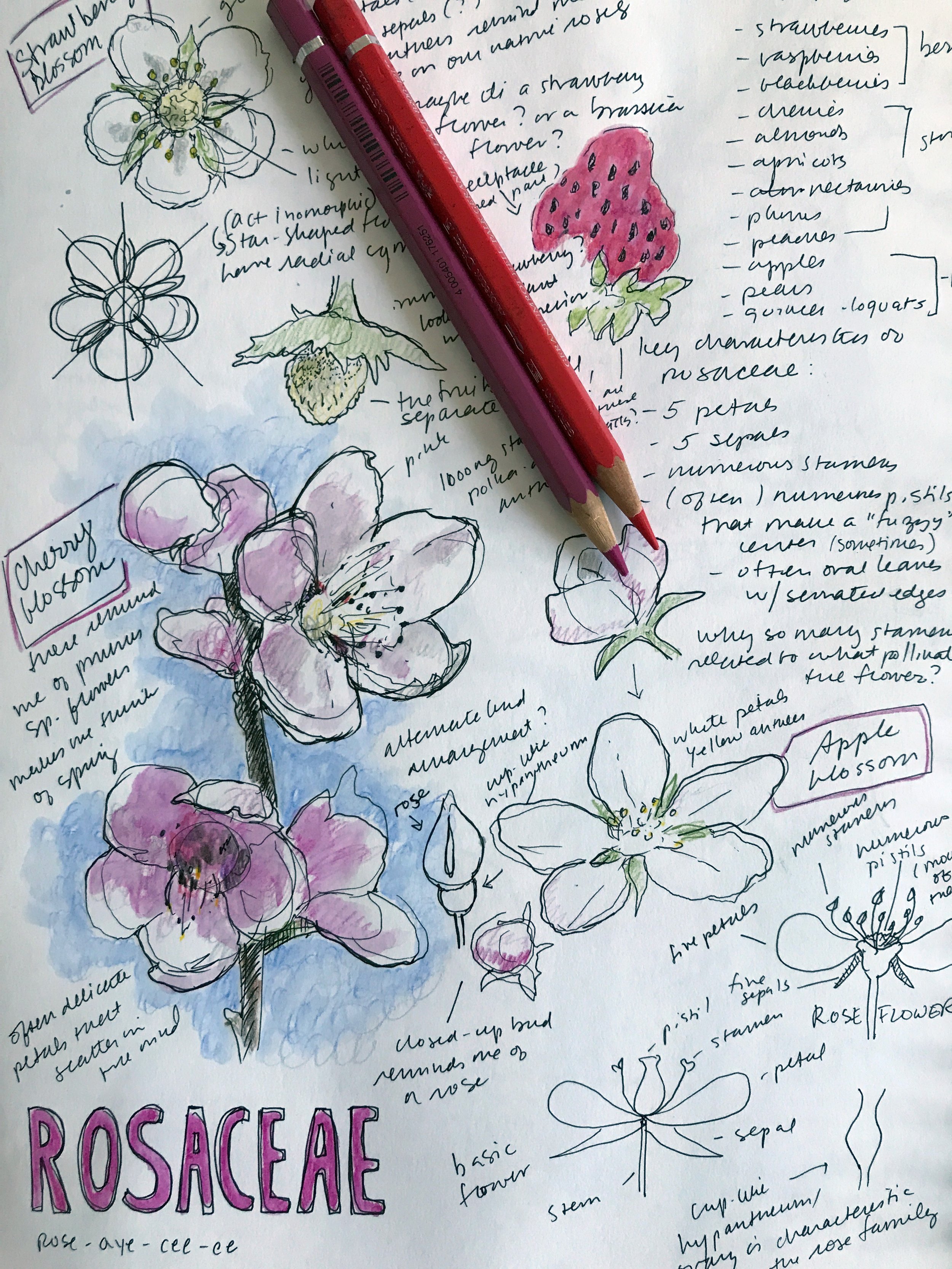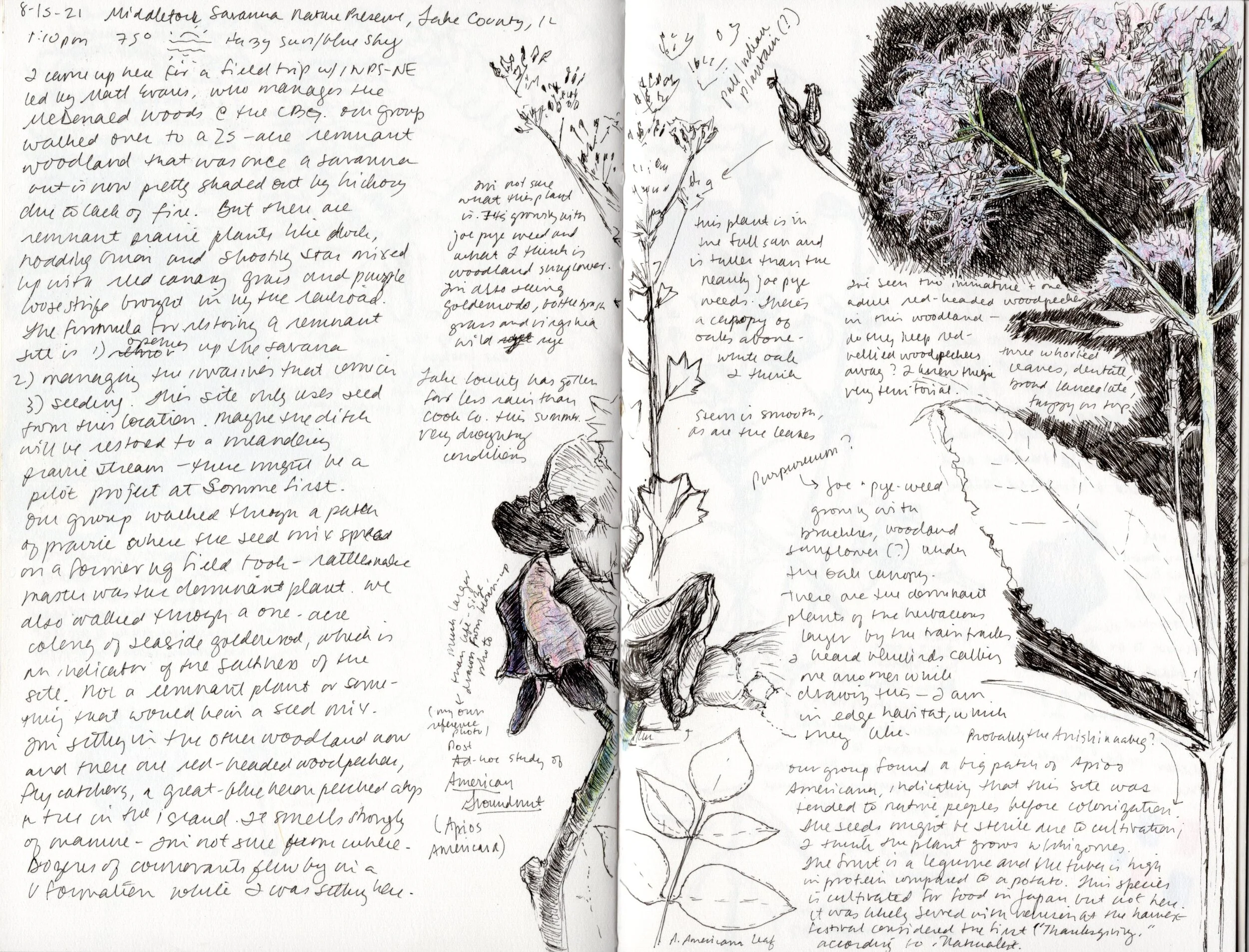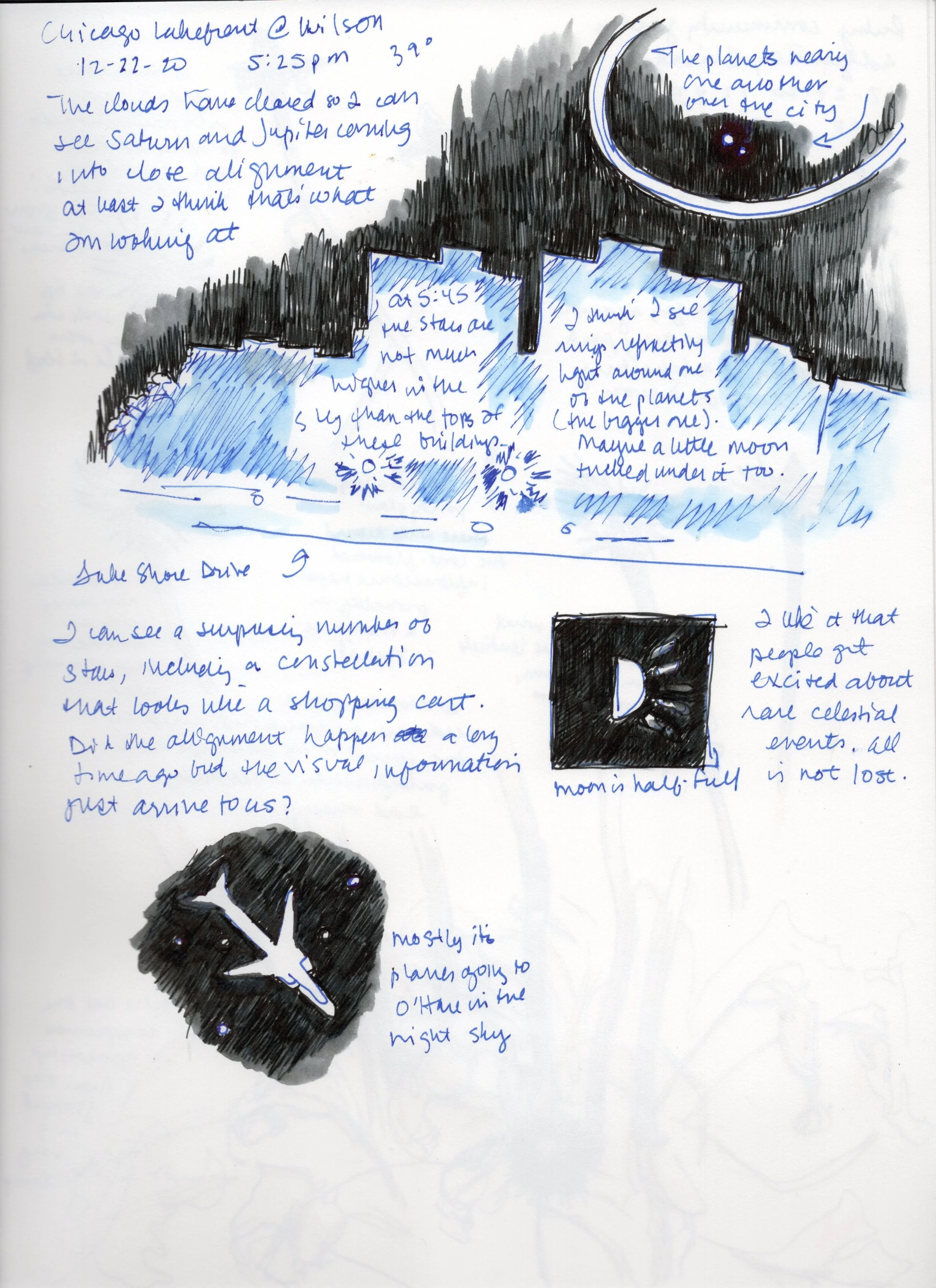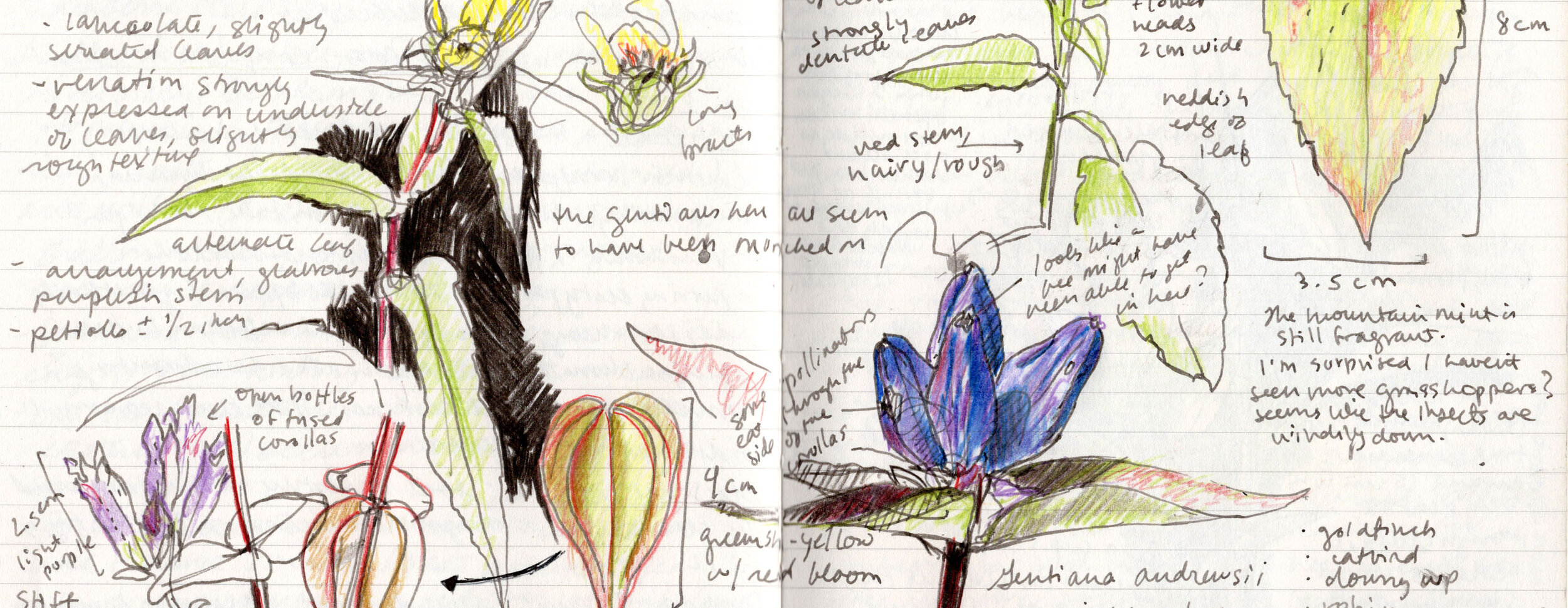Once again, I’ll be summarizing the teachings of John Muir Laws, who gives an overview of these nature journaling languages in the video above.
Our first nature journaling language is that of written words.
As Laws explains, using words in our journal allows us to be very specific and hone in on any details we may wish to record. They can describe our questions and any explanations we may have, which might be difficult to illustrate in a picture.
And that leads us to our second language, which is that of pictures or illustrations.
As Laws explains, “When we're putting pictures and drawings in our journal, the way our brain works is fundamentally different from the way it works when we're just writing with words.”
Pictures are not better than words, or vice versa, “but they exercise different parts of our brains. When we're intentionally using words and we're intentionally using pictures in our journal, we have more of our brain to play with for whatever it is that we're observing.”
The purpose of using pictures in our nature journal is not to make a pretty picture, though you may end up with one. The goal here is for our pictures to be useful, to serve as a visual strategy to describe our subject.
Pictures can include a map, a simplified diagram, a visualization of a bird’s song, or a portrait of a flower. Pictures can be zoomed in or zoomed out, show the subject from multiple angles.
If making a picture sounds intimidating to you, consider starting with something relatively two-dimensional like a leaf that you can trace.
And now on to our third and last nature journaling language, which is numbers.
As Laws explains, “If we start counting, measuring, timing and finding numbers in the phenomena we observe, this trains us to be really specific in another kind of way.”
A really easy way of getting some numbers onto your page is to make a note of the date and time at the top of your page, and if you’re journaling outdoors, the temperature. More ways to incorporate numbers onto your page would be to count the number of chambers in a seed pod, for example, or estimate the number of seeds contained in one of the chambers; it could be the number of petals on a flower; the number of house sparrows gathered at your feeder; the number of seconds a chickadee stays on your feeder before flying off; the number of seconds a merganser stays under water before resurfacing.
Using these three languages in combination with the “I notice, I wonder, This reminds me of” prompts are a powerful way to look at the observe, document what you find and make new and exciting connections.
Am I doing it right?
If you have a moment of doubt, remember that you’re not doing it wrong. You’re doing it your way.
I was once told that the only way to do field sketching wrong is to not do it at all. The same applies to nature journaling.
We live in a culture that asks us to optimize everything. We’re expected to master everything we do; we’re repeatedly given the message that we should only do something unless we can excel at it, be the best at it, or make money from it. Nature journaling is the antithesis of and an antidote to this social messaging that discourages personal growth.
Nature journaling is a deeply personal practice. You don’t have to share your pages with anyone, though this can be rewarding in a supportive community of other nature journalists.
Looking at other people’s nature journal pages on social media can be discouraging. Try to stay focused on your own journey and avoid comparing what you do with what other people do, unless you want to learn from their technique, method of observation, or what kind of tools they use.
There are plenty of generous nature journalists out there who use their platforms to share their techniques and experiences with the aim of getting other people excited about nature journaling (it’s a practice that encourages generosity). For more on this, see “Where can I learn more?” below.
What gear should I use?
You can start nature journaling with what you already have. Your nature journal kit can be as simple as a composition notebook and a ballpoint pen.
My current nature journaling kit includes a Stillman & Birn Epsilon series wire-bound sketchbook (I have a smaller hardcover one too). I like these because they work well with pen and ink and can handle a light wash. Someone who uses watercolor might like a different type of paper, and someone who just uses a ballpoint pen won’t necessarily need such a high-quality paper. Whatever you end up using, I recommend using something with a stiff cover. Having a bulldog clip or two in your nature journaling kit is handy to keep your pages in place if you’re journaling in a windy environment.
As for writing and drawing implements, I’ve been keeping it simple (by my maximalist standards, at least) and usually just carry a pen with walnut-colored ink, another pen with gray ink (I have been using inexpensive Platinum Preppy fountain pens; when you use up the ink cartridge the pen comes with, you can use a syringe to fill it with any bottled ink you like). I also typically have in my kit couple of inexpensive water-soluble pens that you can get at an office supply store. I also like really fine-lined Micron pens, in brown and black ink.
Another essential tool in my kit is a waterbrush. This is a nylon-bristled brush with a built-in water reservoir. It’s tidy and extremely handy for doing washes in my journal.
In the wintertime, when it’s really cold and I therefore work fast in my journal, I pretty much just use pen and ink. But when conditions allow for more time outside, I might include in my kit a limited palette of Faber-Castell watercolor pencils (not so inexpensive). I like botanical artist Wendy Hollender’s 13-color palette. I’ll often carry the same palette of Faber-Castell Polychromos pencils. A white plastic eraser and pencil sharpener are good to have if you’re using pencils in the field.
I always have a T-shirt rag in my bag in case I need to lift a wash or need to blot something.
I also typically have a small ruler, a hand lens and these compact and very lightweight binoculars that are great for examining something up close and for seeing things far away.
I carry all of this in a Tom Bihn Maker’s Bag. These are not cheap. You really don’t need a fancy bag to nature journal. I got this one because of the quality of manufacturing and because it can hold all my nature journaling stuff plus my coffee thermos or a water bottle and a field guide. I don’t have a car and get everywhere by public transit or bicycle, so I need to be able to carry everything on me when I’m out in the field. My one gripe about this bag is that it’s kind of a struggle to get my 9x12 sketchbook in and out of the full bag. I wish it had a big outside pocket on the back to make it easy to grab my sketchbook and put it back when I’m in the field. I do recommend a shoulder or messenger-style bag versus a backpack, because the easier it is to grab your journal, the more likely you are to use it.
Where can I learn more?
Here are some of the resources I’ve consulted along the way during my nature journaling journey:
Books:
Nature Drawing by Clare Walker Leslie
The Art of Field Sketching by Clare Walker Leslie
The Laws Guide to Nature Drawing and Journaling by John Muir Laws
How to Teach Nature Journaling by John Muir Laws and Emilie Lygren
Artist’s Journal Workshop by Cathy Johnson
Botany for the Artist by Sarah Simblet
Botanical Drawing in Color by Wendy Hollender
Websites:
John Muir Laws
Marley Peifer (I’ve especially appreciated his YouTube videos, some of which include interviews with nature journalists)
Lara Call Gastinger
Julia Bausenhardt (she also has several classes on Skillshare)
Bethan Burton’s Journaling with Nature
Podcasts:
The Journaling with Nature podcast hosted by Bethan Burton. Each episode features a long-form interview with a different nature journalist. Each episode is a calming breath of fresh air.
Classes:
I’ve also taken several classes in the Chicago Botanic Garden’s Botanical Arts certificate program, all of which were excellent. If you’re able to take any of those classes, I’d highly recommend them.
